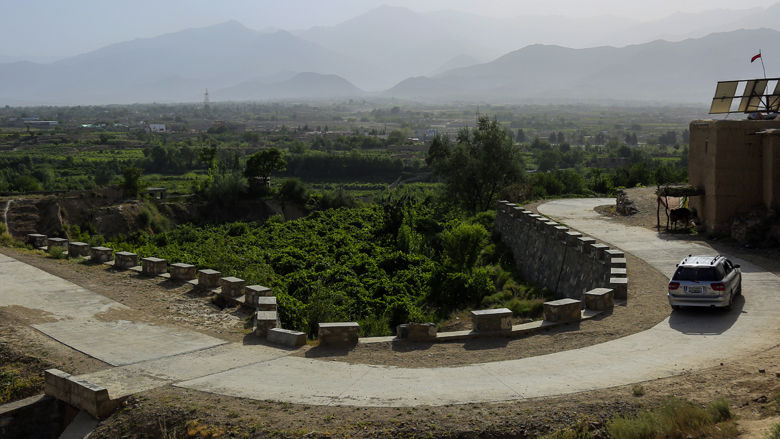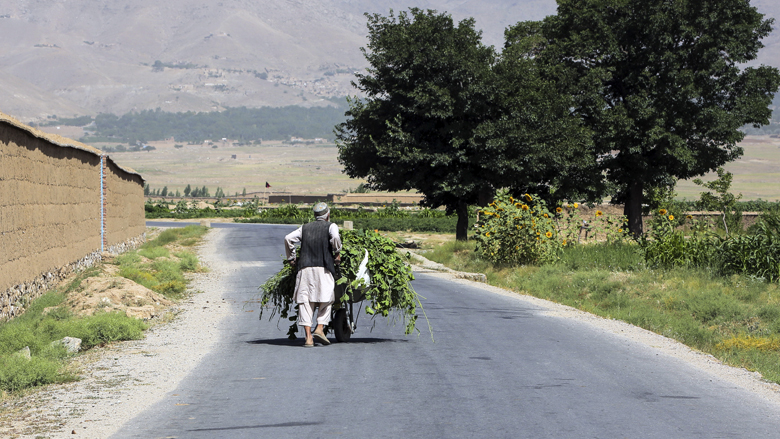Kabul Province – In his self-modified motorcycle mini-truck that serves as a local taxi, Zarkarim, waits patiently alongside the road for his next customer.
Zarkarim’s motorcycle mini-truck was an important means of transport for villagers when most other vehicles refused to take passengers down the unpaved rural roads. “My motorcycle mini-truck was getting damaged and slowly destroyed by the rough road conditions over time,” recalls Zarkarim, who has spent four years as a driver, traversing the roads in and around the district.
In recent years, however, Zarkarim has been happy to carry passengers and goods in his motorcycle mini-truck. A main road in the district was asphalted by the Afghanistan Rural Access Project (ARAP) in 2016. Since then, “I and the other drivers are so happy because we can make our trips on a paved road,” Zarkarim says. “I also make more money because I can make four or five trips a day carrying goods when before I could only make one trip because I had to drive so slowly and carefully over the dirt road, often having to repair damage along the way.”
including Dasht, Gozar, Khroti, Kishtiban, Qala Roki, Sarawa Simich, Sarghech, Siab Sangar, Siawe Charmgar, and Sonobar have benefited from the all-weather road, which was paved between 2015 and 2016.
The paved road has greatly benefited farmers like Jan who depends on motorized transportation to sell his produce. “My biggest problem [before the road was paved] was getting my fresh produce to the market,” he recalls. “Cars would not come and take it from my house, so my only option was to take it to the market by donkey and wooden carriage.” He says the bumpy journey took much longer than a journey by motor over paved roads, and it also tended to damage the goods. Today, however, shop owners are willing to travel the road, which means they can come to him to buy his produce, reducing the amount of goods he personally has to transport to the market, says Jan.


